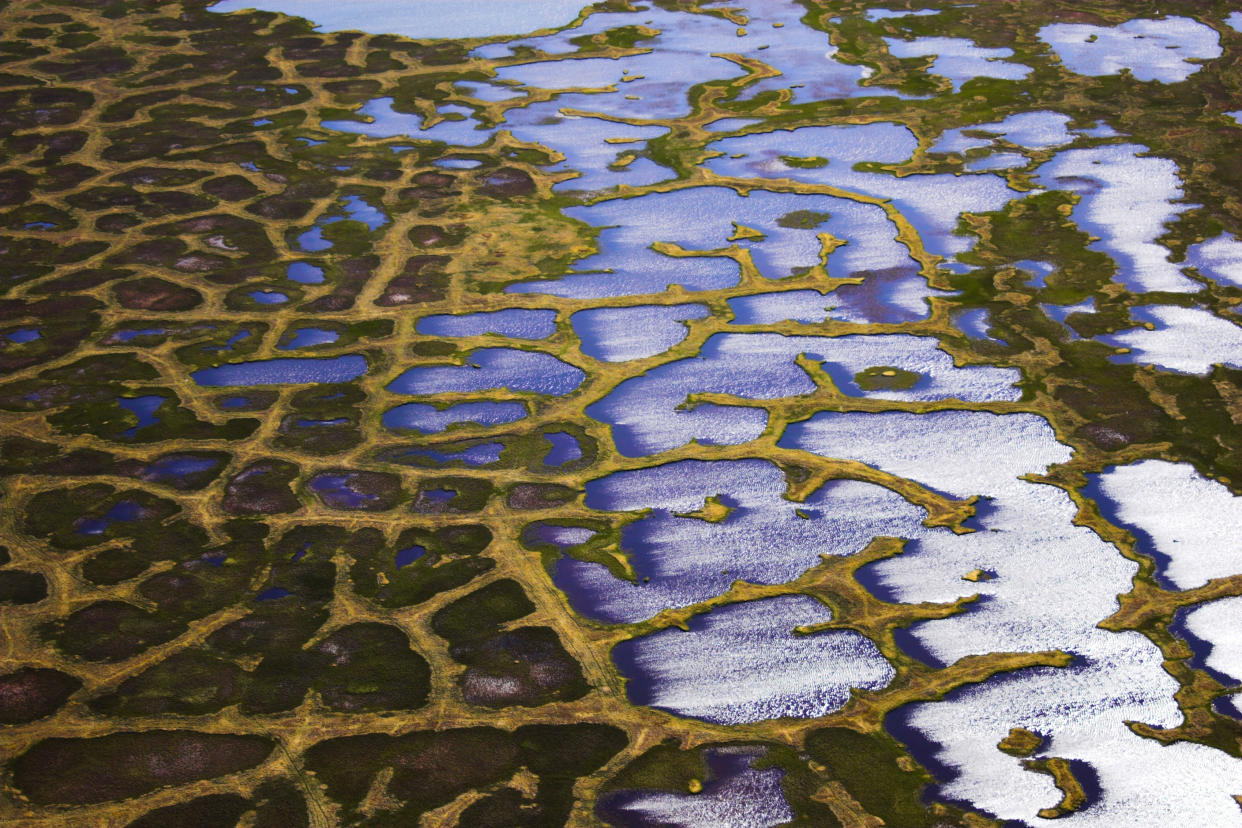Thawing permafrost ‘is revealing organisms frozen for hundreds of years’

Astonished researchers have found that plants frozen in permafrost are still alive after centuries frozen in ice.
Researchers in Canada’s Ellesmere Island found plants which had been frozen underneath 100 feet of ice since the ‘Little Ice Age’ of 1850.
To their surprise, a tuft of the species Aulacomnium turgidum showed a green colour - a sign of life.
Catherine La Farge of the University of Alberta said, ‘You wouldn’t assume that anything buried for hundreds of years would be viable,
‘The material had always been considered dead. But by seeing green tissue, ‘‘I thought, ‘Well, that’s pretty unusual.’
Other scientists found bacteria or multicellular organisms frozen in the ice, the Washington Post report found.
READ MORE
‘Abolish Eton’: Labour group launches Twitter campaign against fee-paying schools
Gender reveal stunt backfires spectacularly as car goes up in flames
Tommy Robinson 'encouraged mob rule and risked justice'
Earlier this year, hawing permafrost in the Arctic could create a dangerous ‘feedback’ in global warming by releasing greenhouse gases - adding £54 trillion to the cost of global warming.
The figure, revealed in a new Nature Research study, is due to the release of carbon dioxide and methane frozen in Arctic permafrost, which will amplify Earth’s warming.
The feedback mechanism (combined with the loss of heat-reflecting white ice) could increase global warming by 5%, the Guardian reports.
That would push the cost of global warming up to $70 trillion (£54 trillion) between now and 2300, according to the research published in Nature.
Researchers assessed frozen organic matter buried up to 10ft below the ice across the Arctic, and ran supercomputer simulations to assess the amounts released by different levels of warming.
‘It’s disheartening that we have this in front of us,’ said Dmitry Yumashev of Lancaster University.
‘Even at 1.5C to 2C, there are impacts and costs due to thawing permafrost. But they are considerably lower for these scenarios compared to business as usual.
‘We have the technology and policy instruments to limit the warming but we are not moving fast enough.’

 Yahoo News
Yahoo News 

